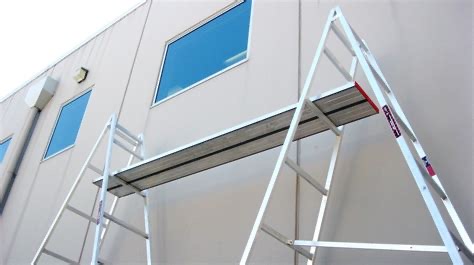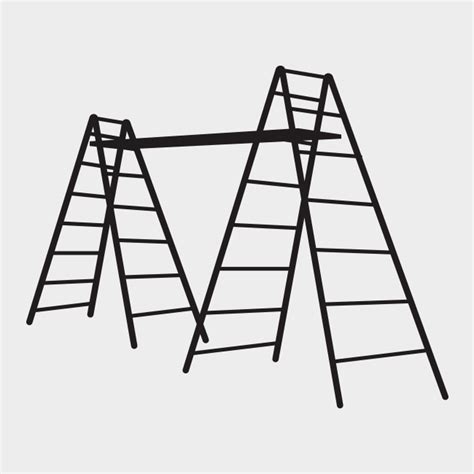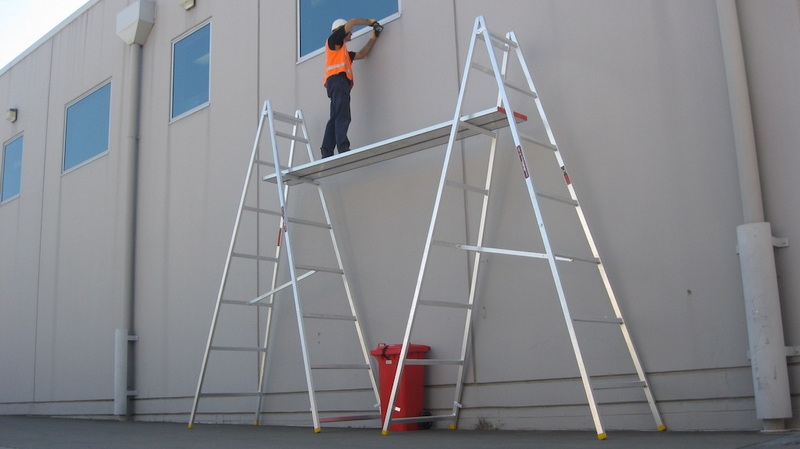Content Menu
● Introduction to A Frame Trestle Scaffolding
● Types of Scaffolding
● Setting Up A Frame Trestle Scaffolding
>> Step 1: Prepare the Ground Area
>> Step 2: Assemble the Trestles
>> Step 3: Add Braces and Platforms
>> Step 4: Install Safety Features
● Safety Considerations
>> Importance of Regular Inspections
>> Role of Proper Training
>> Load Limits and Capacity
>> Weather Conditions
● Comparison with Other Types of Scaffolding
● Additional Safety Measures
>> Edge Protection
>> Accessing the Scaffolding
>> Fall Protection Equipment
● Conclusion
● FAQ
>> 1. What are the key components of a frame trestle scaffolding?
>> 2. How do I ensure the stability of a frame trestle scaffolding?
>> 3. What safety features should be included in a frame trestle scaffolding setup?
>> 4. Can I use a frame trestle scaffolding for high-rise projects?
>> 5. Do I need professional training to set up a frame trestle scaffolding?
● Citations:
Setting up a frame trestle scaffolding safely is crucial for ensuring the stability and security of the structure, which is essential for protecting workers and preventing accidents. This type of scaffolding is commonly used in construction, maintenance, and DIY projects due to its ease of assembly and cost-effectiveness. In this article, we will guide you through the step-by-step process of setting up a frame trestle scaffolding safely, highlighting key safety considerations and providing visual aids to enhance understanding.

Introduction to A Frame Trestle Scaffolding
A frame trestle scaffolding is a type of scaffolding that consists of prefabricated trestles, braces, and accessories. It is widely used by bricklayers, plasterers, and painters for general fit-out and finishing work. The structure is typically lightweight and easy to assemble, making it a popular choice for small construction projects and DIY enthusiasts.
Types of Scaffolding
Before diving into the setup process, it's helpful to understand the different types of scaffolding available:
- Tube and Coupler Scaffolding: Known for its versatility and strength, this type is commonly used in large construction projects.
- Masonry Scaffolding: Designed specifically for masonry work, it provides a stable platform for handling heavy materials.
- Cantilever Scaffolding: Used when the scaffolding needs to be supported from one side only.
- Suspended Scaffolding: Ideal for high-rise buildings, it is suspended from the roof or a higher structure.
- Rolling Scaffolding: Portable and easy to move, often used for indoor projects.
- Trestle Scaffolding: Includes A-frame trestle scaffolding, suitable for smaller projects and DIY tasks.
Setting Up A Frame Trestle Scaffolding
Step 1: Prepare the Ground Area
1. Select and Prepare the Ground: Ensure the ground is level and firm. Remove any debris or obstacles that could interfere with the scaffolding.
2. Use Sills: Place sills under the trestles to prevent them from sinking into the ground. Sills should be large enough to distribute the weight evenly.
Step 2: Assemble the Trestles
1. Erect the Trestles: Stand the trestles upright and ensure they are stable. Use adjustable feet if necessary to level them on uneven ground.
2. Secure the Trestles: If the ground is uneven or the trestles are tall, consider securing them to a stable structure to prevent toppling.
Step 3: Add Braces and Platforms
1. Attach Braces: Connect the trestles with cross braces to enhance stability. Ensure all connections are secure and follow the manufacturer's instructions.
2. Install Platforms: Place wooden planks or boards between the trestles to create a work platform. Ensure the planks overhang the supports by 150-250 mm and are securely fastened.
Step 4: Install Safety Features
1. Guardrails: Install guardrails around the platform to prevent falls. Ensure they are securely attached to the trestles.
2. Toeboards: Add toeboards to prevent tools and materials from falling off the platform.

Safety Considerations
Safety is paramount when working with scaffolding. Here are some key considerations:
- Regular Inspections: Regularly inspect the scaffolding for damage or wear.
- Proper Training: Ensure all users are trained in scaffolding assembly and use.
- Load Limits: Never exceed the recommended load limit for the scaffolding.
- Weather Conditions: Avoid using scaffolding in adverse weather conditions like strong winds or heavy rain.
Importance of Regular Inspections
Regular inspections are crucial to ensure that the scaffolding remains safe and stable. This includes checking for any damage to the trestles, braces, or platforms, and ensuring that all connections are secure. Any defects or issues should be addressed promptly to prevent accidents.
Role of Proper Training
Proper training is essential for anyone involved in the assembly or use of scaffolding. This includes understanding how to safely erect and dismantle the scaffolding, how to use safety equipment, and how to recognize potential hazards. Training should be provided by a competent person and should cover all relevant safety procedures.
Load Limits and Capacity
Understanding the load limits of the scaffolding is vital to prevent overloading, which can lead to structural failure. The load limit includes the weight of workers, tools, and materials. Always refer to the manufacturer's guidelines for specific load capacities.
Weather Conditions
Weather conditions can significantly affect the stability and safety of scaffolding. Avoid using scaffolding during strong winds, heavy rain, or icy conditions, as these can increase the risk of accidents.
Comparison with Other Types of Scaffolding
Frame Scaffolding vs. Trestle Scaffolding
| Feature | Frame Scaffolding | Trestle Scaffolding |
| Stability | Highly stable due to its rigid frame structure. | Less stable, requires additional support for tall setups. |
| Versatility | Can be customized for various heights and configurations. | Limited to specific heights and configurations. |
| Ease of Assembly | Requires more components and time to assemble. | Quick and easy to assemble. |
| Load Capacity | Can handle heavier loads. | Suitable for lighter loads. |
| Cost | Generally more expensive. | Less expensive. |
Additional Safety Measures
Edge Protection
Edge protection is crucial for preventing falls from the scaffolding platform. This includes guardrails and toeboards. Ensure that edge protection is installed according to the manufacturer's instructions and local safety regulations.
Accessing the Scaffolding
Access to the scaffolding should be safe and controlled. Use ladders or stairways that are securely attached to the scaffolding. Ensure that all access points are clearly marked and that workers are trained in safe climbing practices.
Fall Protection Equipment
In addition to edge protection, personal fall protection equipment (PFPE) such as harnesses and lanyards should be used when working at heights. Ensure that PFPE is properly fitted and used in accordance with the manufacturer's guidelines.
Conclusion
Setting up a frame trestle scaffolding safely requires careful planning, proper assembly, and adherence to safety guidelines. By following these steps and ensuring that all safety measures are in place, you can create a stable and secure work environment for your projects.

FAQ
1. What are the key components of a frame trestle scaffolding?
The key components include trestles, cross braces, platforms, and guardrails. Trestles provide the vertical support, cross braces add stability, platforms serve as the work surface, and guardrails ensure safety.
2. How do I ensure the stability of a frame trestle scaffolding?
Stability can be ensured by using adjustable feet on uneven ground, securing the trestles to a stable structure if necessary, and ensuring all connections are tight and secure.
3. What safety features should be included in a frame trestle scaffolding setup?
Safety features include guardrails to prevent falls, toeboards to prevent tools from falling, and regular inspections to identify any damage or wear.
4. Can I use a frame trestle scaffolding for high-rise projects?
No, a frame trestle scaffolding is generally not suitable for high-rise projects. It is better suited for smaller construction projects or DIY tasks due to its lightweight nature and ease of assembly.
5. Do I need professional training to set up a frame trestle scaffolding?
While professional training is not always required, it is recommended to ensure the scaffolding is erected safely and correctly. A competent person should oversee the assembly process.
Citations:
[1] https://www.safeworkaustralia.gov.au/sites/default/files/2022-05/guide-scaffolds-scaffolding_-_may_2022_version.pdf
[2] https://www.safework.nsw.gov.au/resource-library/scaffolding/trestle-ladder-scaffolds-fact-sheet
[3] https://www.yueyangcz.com/new_detail/How-to-build-a-frame-scaffolding.html
[4] https://my.thsp.co.uk/download-guidance.php?id=45
[5] https://www.safework.nsw.gov.au/resource-library/scaffolding/trestle-scaffolds-fact-sheet
[6] http://www.osha.gov/etools/scaffolding/supported/frame
[7] https://dss.net/frame-scaffolding-system/
[8] https://primesteeltech.co.in/what-is-a-frame-scaffolding-and-where-is-it-used.html






















